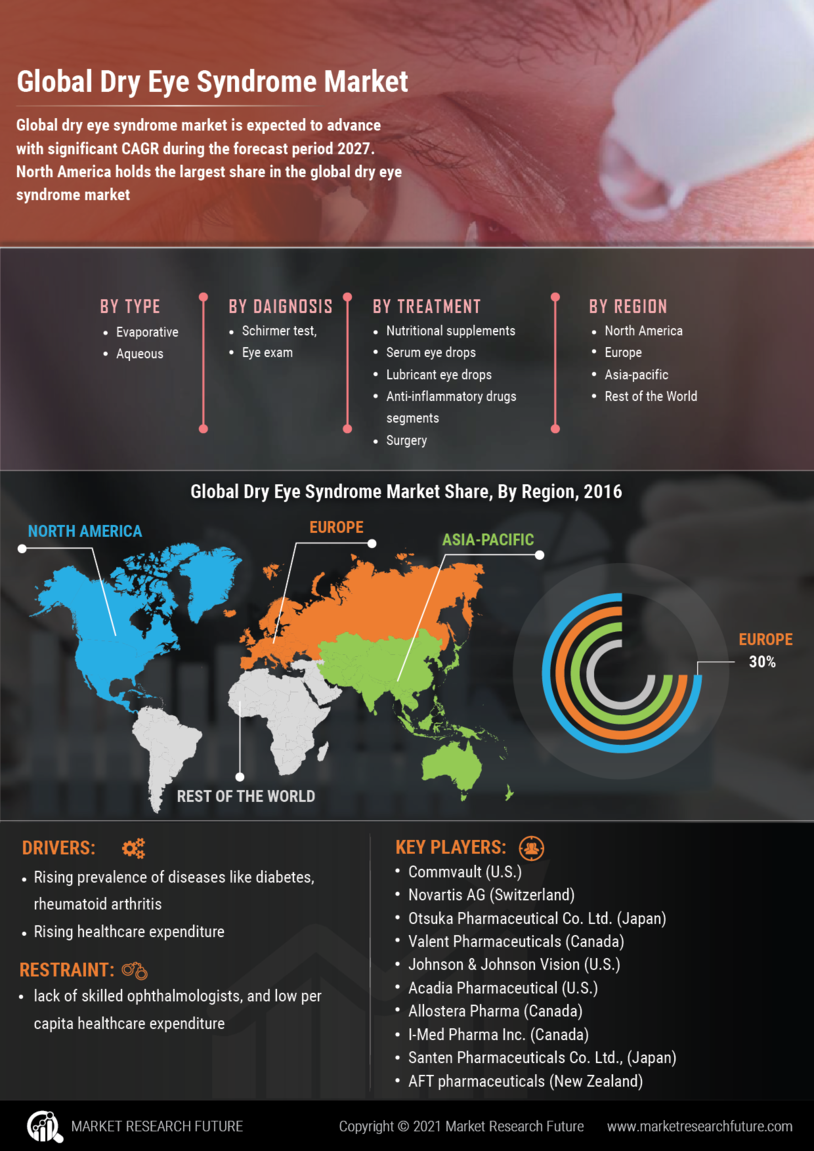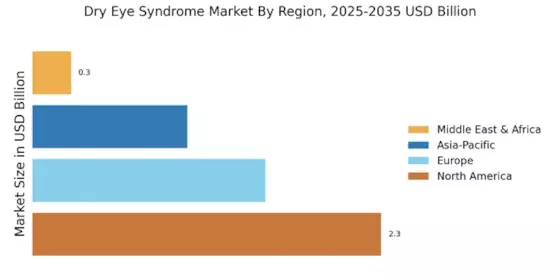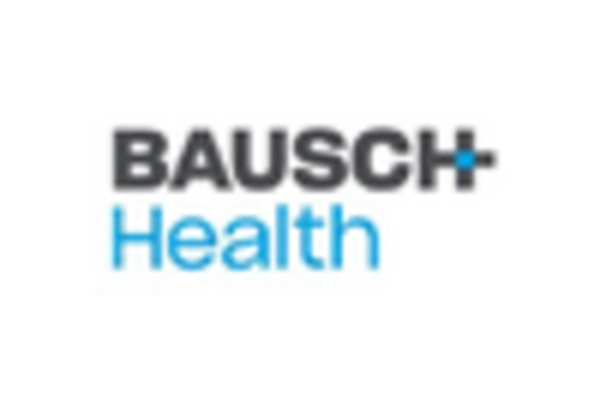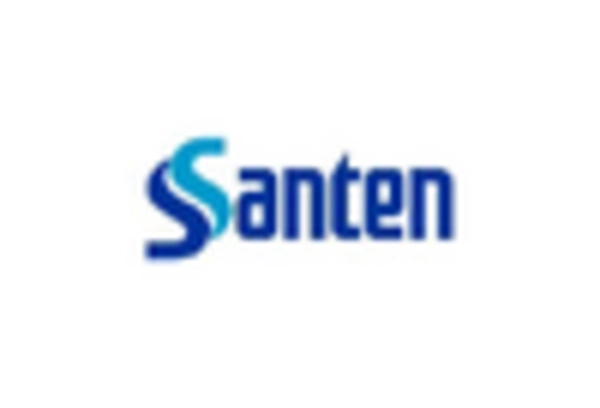Advancements in Diagnostic Technologies
Technological innovations in diagnostic tools are transforming the Dry Eye Syndrome Market. Enhanced diagnostic capabilities allow for earlier detection and more accurate assessments of dry eye conditions. Devices such as tear break-up time analyzers and osmolarity testing equipment are becoming more prevalent, enabling healthcare professionals to tailor treatment plans effectively. The introduction of point-of-care testing devices has the potential to streamline patient evaluations, leading to timely interventions. As awareness of the importance of precise diagnostics grows, the demand for these advanced technologies is expected to rise, thereby fostering growth within the Dry Eye Syndrome Market. This trend may also encourage collaborations between technology firms and healthcare providers, further enhancing the market landscape.
Increasing Prevalence of Dry Eye Syndrome
The rising incidence of Dry Eye Syndrome Market is a pivotal driver in the Dry Eye Syndrome Market. Factors such as aging populations and increased screen time contribute to this trend. Research indicates that approximately 5 to 30% of the population experiences symptoms of dry eye, with higher rates observed in older adults. This growing prevalence necessitates enhanced treatment options and drives demand for innovative therapies. As more individuals seek relief from discomfort, the market is likely to expand, prompting pharmaceutical companies to invest in research and development. The increasing recognition of dry eye as a chronic condition further emphasizes the need for effective management strategies, thereby propelling the Dry Eye Syndrome Market forward.
Rising Incidence of Environmental Factors
Environmental factors are playing a crucial role in the increasing prevalence of Dry Eye Syndrome Market, thereby impacting the Dry Eye Syndrome Market. Factors such as air pollution, prolonged exposure to screens, and dry indoor environments contribute to the exacerbation of dry eye symptoms. Studies indicate that individuals living in urban areas are more susceptible to dry eye conditions due to these environmental stressors. As awareness of these contributing factors grows, there is a heightened demand for preventive measures and effective treatments. This trend is likely to drive market growth as consumers seek solutions that mitigate the effects of environmental influences on eye health. Consequently, the Dry Eye Syndrome Market may see an influx of products designed to address these specific challenges.
Increased Focus on Eye Health and Wellness
The growing emphasis on overall eye health and wellness is significantly influencing the Dry Eye Syndrome Market. As consumers become more health-conscious, there is a rising interest in maintaining optimal eye function and preventing conditions like dry eye. Educational campaigns and initiatives aimed at promoting eye health are gaining traction, leading to increased awareness of dry eye symptoms and available treatments. This heightened focus is likely to drive demand for both preventive and therapeutic products within the market. Furthermore, the integration of eye health into broader wellness trends may encourage collaborations between eye care professionals and wellness brands, fostering innovation in the Dry Eye Syndrome Market. As a result, the market is poised for growth as consumers actively seek solutions to enhance their eye health.
Growing Demand for Innovative Treatment Options
The Dry Eye Syndrome Market is witnessing a surge in demand for novel treatment modalities. Traditional therapies, such as artificial tears, are increasingly supplemented by advanced options like anti-inflammatory medications and regenerative therapies. The market is projected to experience substantial growth, with estimates suggesting a compound annual growth rate of over 5% in the coming years. Patients are seeking more effective solutions that address the underlying causes of dry eye rather than merely alleviating symptoms. This shift in patient preferences is prompting pharmaceutical companies to invest in research and development of innovative products. As a result, the Dry Eye Syndrome Market is likely to evolve, offering a broader range of therapeutic choices to meet diverse patient needs.


















Leave a Comment